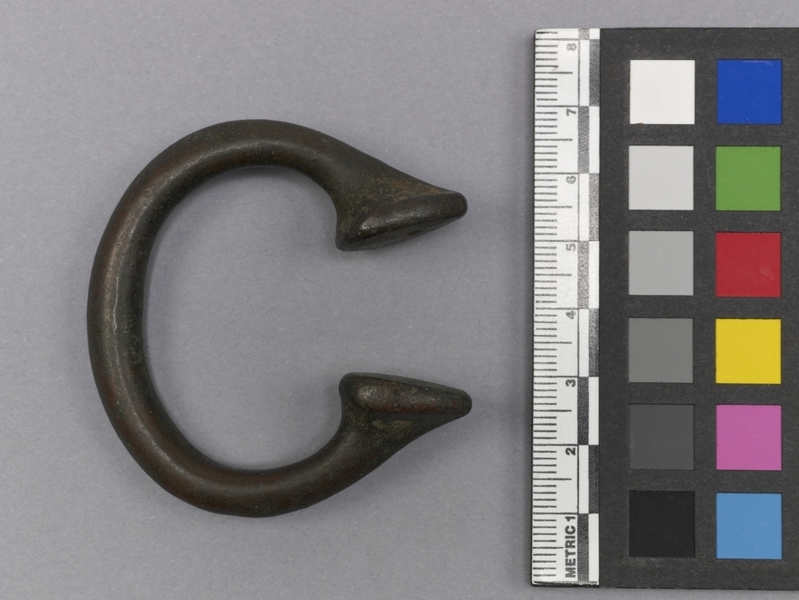Money Item Number: 2704/10 from the MOA: University of British Columbia


Description
Manilla. C-shaped, round, metal band, with flattened, circular ends.
History Of Use
Manillas were used as a form of currency, usually made of bronze or copper, in West Africa; introduced by Portugal, they were made to copy an existing local currency. Portuguese trade with West Africa spread and popularized the use of manillas as a trade currency. When the Dutch and British empires replaced Portugal as the dominant colonial powers in the region, they continued producing manillas for export to Africa, with English factories producing huge quantities in the late 1700s. When the British attempted to produce cheaper manillas, primarily out of cast iron, they were rejected because they lacked certain physical properties expected of a legitimate manilla. Manillas were primarily used for the Atlantic slave trade, during which a slave could be traded for 12 to 15 manillas, and continued to serve as money and decorative objects until the late 1940s. Under British rule, circulation of manillas was gradually restricted to southeastern Nigeria. In the early-to-mid 1900s, the colonial government in Nigeria attempted to replace them with British coinage, because they were unable to control or tax the currency, but were forced to recognize it as a legal dual currency after multiple uprisings following a ban in 1911. The colonial government was finally successful with replacing them in 1948-1949. Manillas came in many varieties and denominations, ranging from 3 ounce rings to 6 pound bands. Depending on the size, they could be worn as jewellery, as a display of wealth. They could also be hoarded as a greater display of prestige and wealth.
Specific Techniques
Manillas were made with the cire-perdue or lost-wax method. The mould is made of beeswax, covered with clay, and then fired. The wax melts and the hollow clay cast is then filled with scraps of copper-based alloy, before being fired for a second time. XRF analysis suggests the piece is made of a leaded copper, with high antimony content; typical of 19th century manillas.
Item History
- Made in Nigeria before 1900
- Owned by Laurice Durham-Aldridge and Anthony Durham-Aldridge
- Owned by Carmel Magnusson and Terry Aldridge before March 19, 2008
- Received from Carmel Magnusson (Donor) and Terry Aldridge (Donor) on March 19, 2008
What
- Name
- Money
- Identification Number
- 2704/10
- Type of Item
- money
- Material
- copper alloy metal
- Overall
- height 1.5 cm, width 5.7 cm, depth 5.5 cm
Who
- Culture
- West African
- Previous Owner
- Laurice Durham-Aldridge, Anthony Durham-Aldridge, Carmel Magnusson and Terry Aldridge
- Received from
- Carmel Magnusson (Donor) and Terry Aldridge (Donor)
Where
- Holding Institution
- MOA: University of British Columbia
- Made in
- Nigeria
When
- Creation Date
- before 1900
- Ownership Date
- before March 19, 2008
- Acquisition Date
- on March 19, 2008
Other
- Item Classes
- metalwork
- Condition
- good
- Accession Number
- 2704/0010